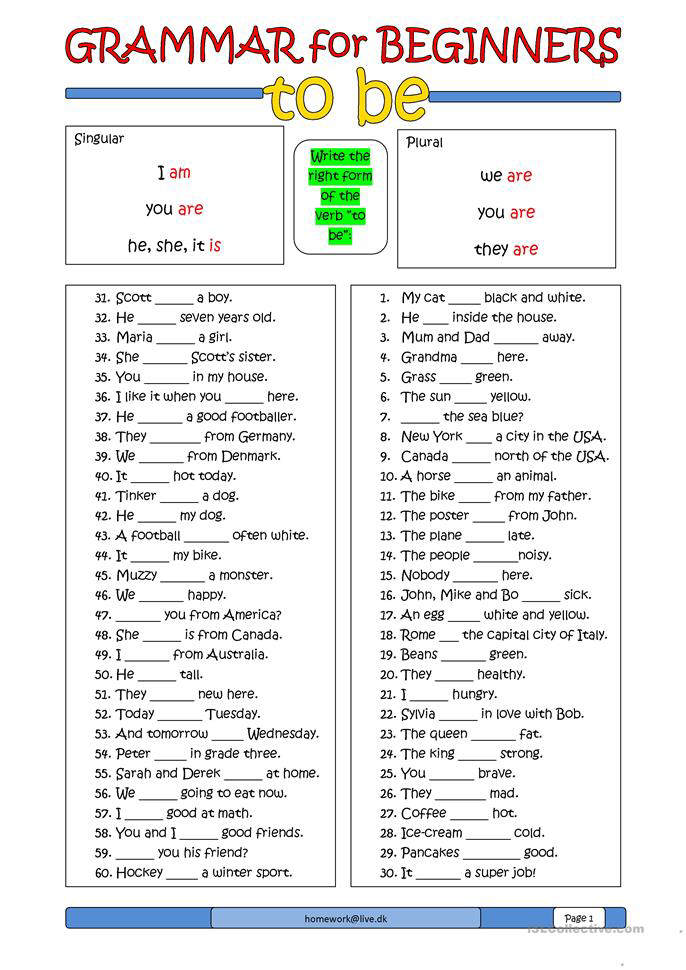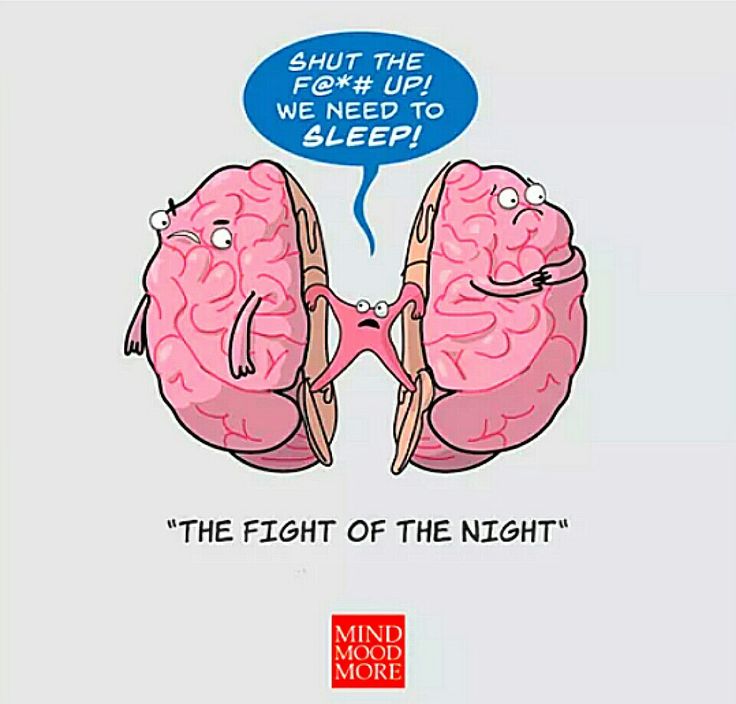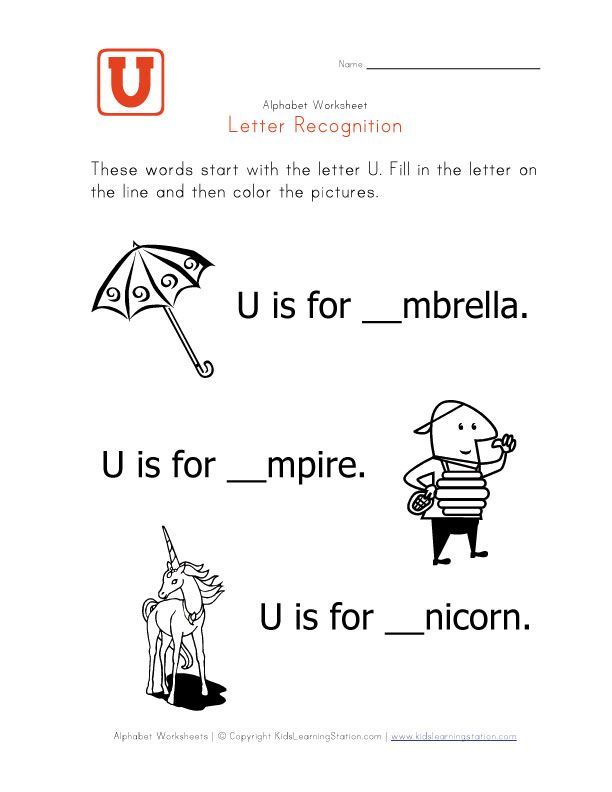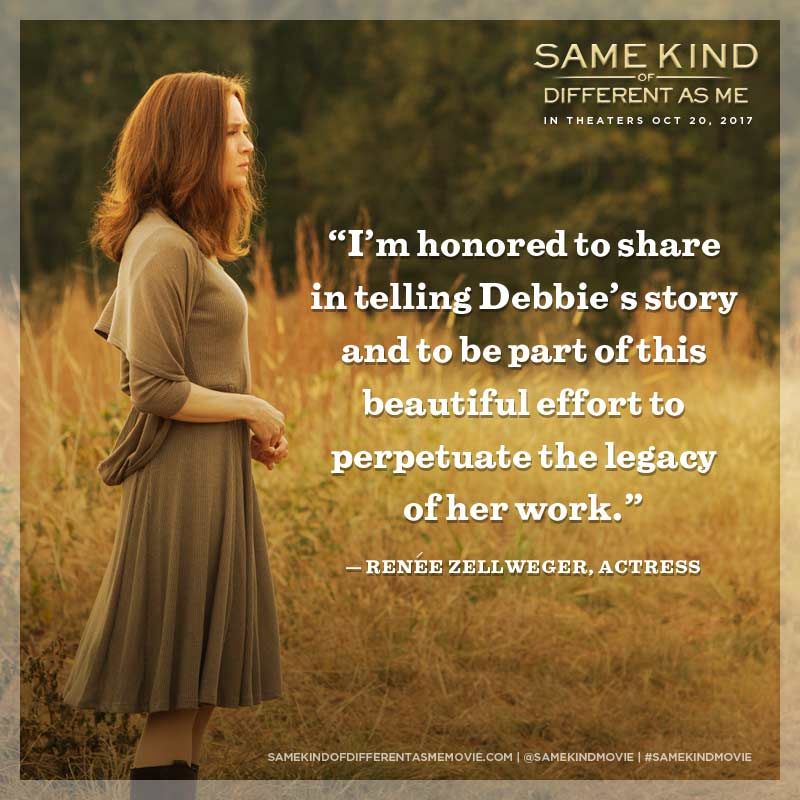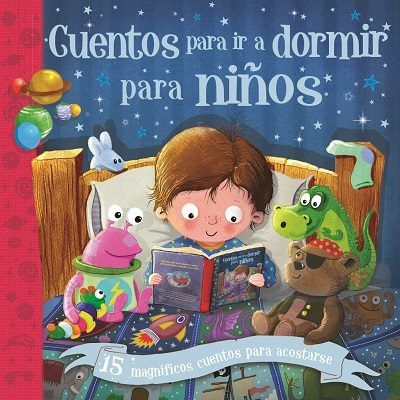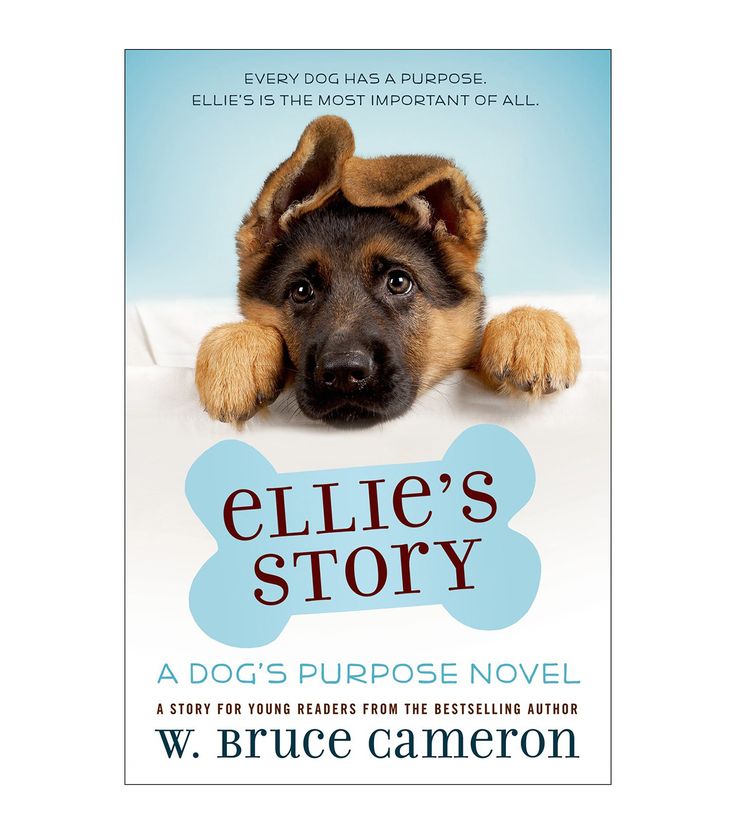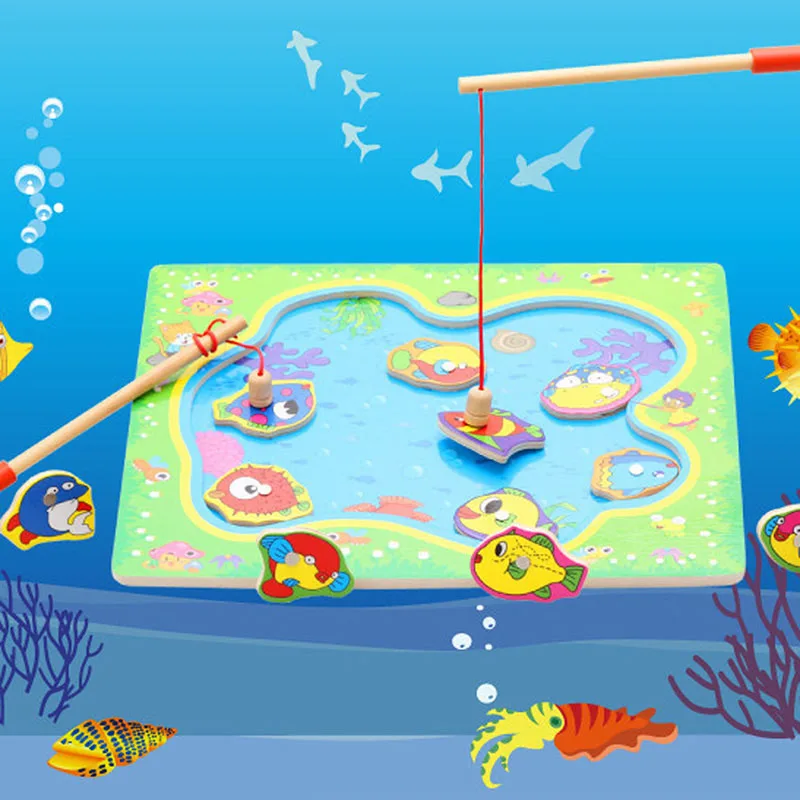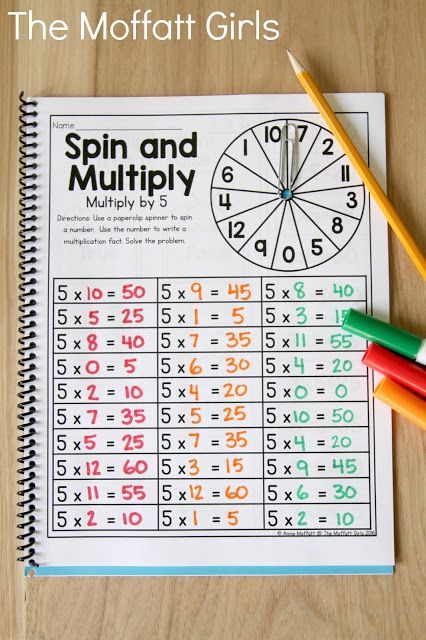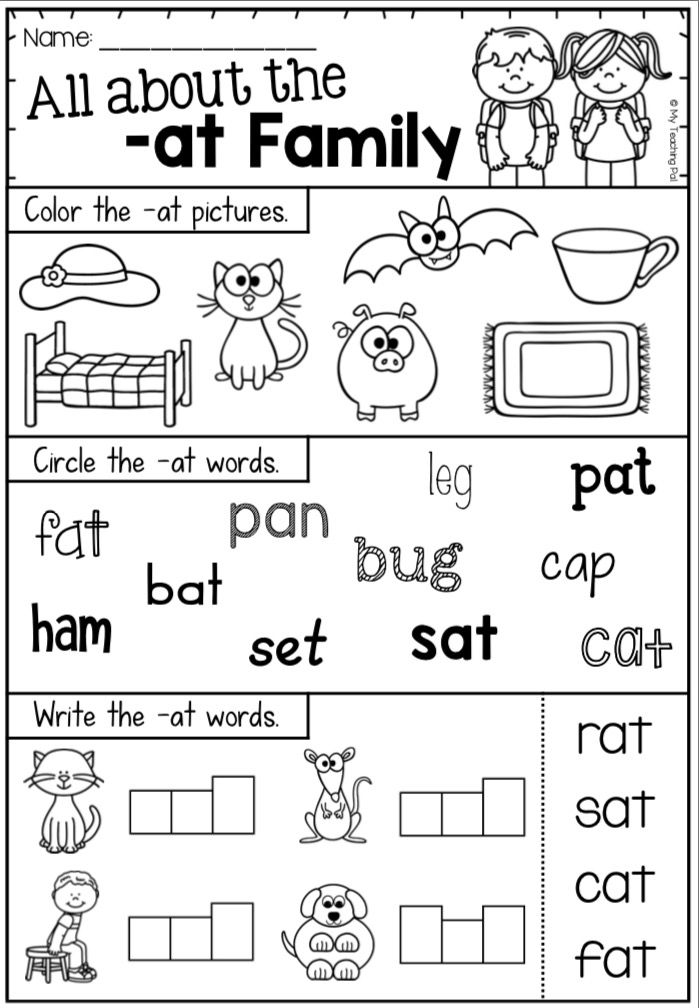Teaching to be verb
Effective ESL "To Be" Verbs Lesson Plan With Worksheets & Helpful Strategies
Grab the Free Kid-Inspired Be-Verbs Lesson Pack by clicking the button below.
Download Worksheet Pack
In this article:
- Tips for Teaching TO BE VERBS: Am, Is, Are
- Activity Ideas
- Free TO BE VERBS Lesson Pack with Printable Worksheets and Activities
When you’re done with this article, you’ll have a solid plan for getting your English Learners using their be-verbs correctly and fluently.
Most native speakers don’t have to worry about using be-verbs correctly and it can be hard to understand what’s so difficult about using “am,” “is,” and “are” correctly.
For an English language learner who did not grow up in an English environment, verb conjugation can throw them off.
Honestly…
It’s not that be-verbs are difficult to understand. That’s the easy part.
The difficult part is practicing them until they can say them without having to think about it.
That is why…
…we need to create lots of opportunities for our students to hear and practice speaking correct English grammar.
That means we need to cut down on the time we spend explaining concepts to students and increase the time they spend interacting with the language, just parents don’t spend a lot of time explaining grammar to their toddlers.
All Kid-Inspired materials are designed with this goal: to get students using the language so much that they end up using it naturally, without having to think about it.
We want each and every student…
We want each and every student hearing and saying loads of our target language objectives each class until they can say them without even having to think about it.
If you need more help…
If you need more help with how to organize your classes to get your students using the language as much as possible, check out my book Kid-Inspired Teacher where I lay out a framework for how to organize your classes to make them both effective and engaging.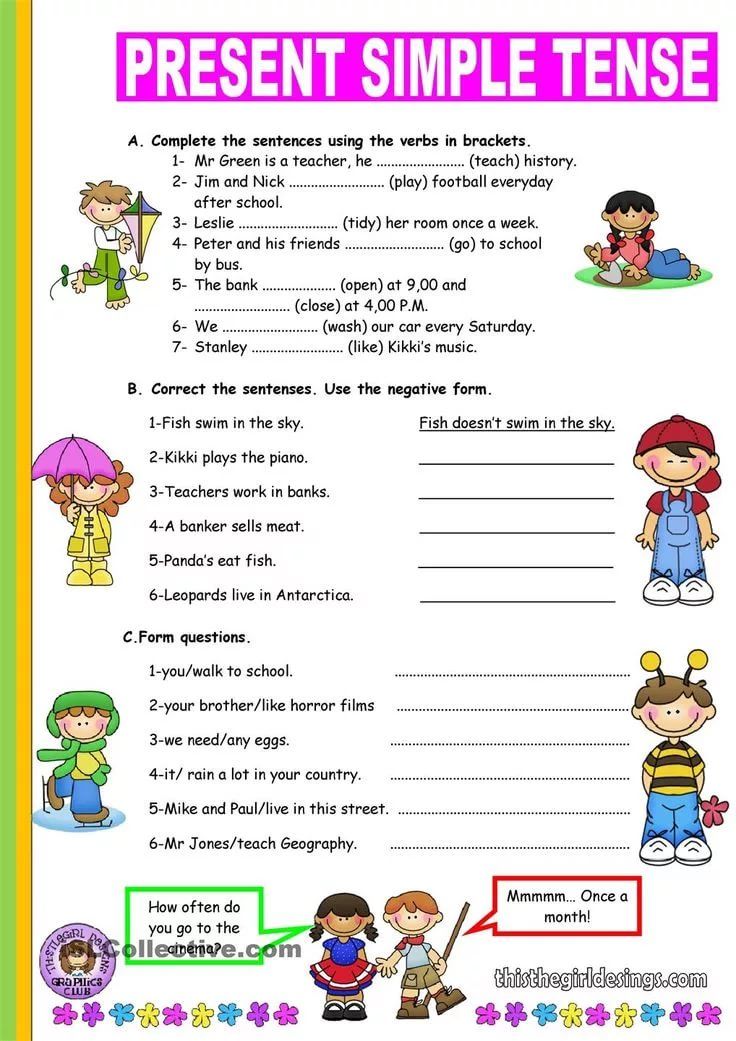
Because there are a few types of be-verb sentences, it’s important to choose one type and focus on it until students have gotten familiar with it.
- Be-verbs with Adjectives
- Be-verbs with Singular Nouns
- Be-Verbs with Plural Nouns
- Negative Be-Verbs
- Be-Verb Questions
Very often, the most difficult part of be-verb sentences is the articles and the plurals that go in the latter part of the sentences.
For instance, a student may get the be verb right in a sentence but forget to add the “a” before the noun that follows, or forget to add the “s” to make the noun that follows plural. Check out the examples below.
- She is a girl.
- They are girls.
The following lesson ideas cover listening, speaking, reading and writing, all 4 language domains.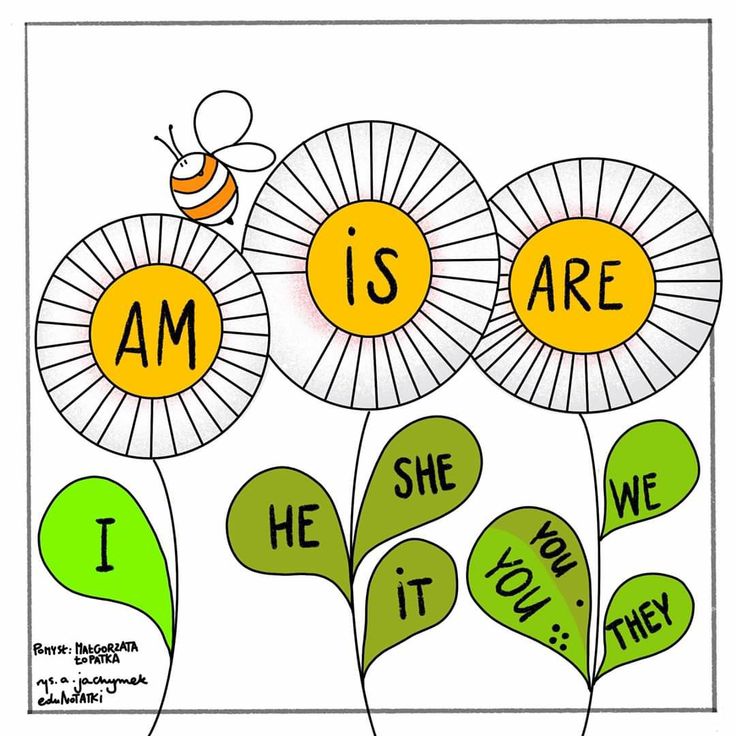
In this article, I’ve only been discussing the present tense be-verbs, but the lesson ideas work equally well with the past tense be verbs.
Teaching Be-Verbs Lesson Plan IdeasHere is an overview of how you can teach be-verbs to your students whether you’re in the classroom or online.
Be-Verbs Lesson Plan- Write example sentences on the board.
- Have students extrapolate the rules from the example sentences inductively. You can call them grammar detectives to make it exciting and mysterious! Click here for more on inductive learning.
- Practice quick response. I say a subject, the class calls out the correct be-verb.
- Put them in groups of 3. One student calls out a subject, the other 2 race to say the correct be-verb. The winner gets a points counter (bean, token, point on a whiteboard, ect) and also gets to call out the next subject.

- If they are responding quickly with the correct be-verbs, practice with asking and answering basic be-verb questions. You may want to stick with only adjectives, or only nouns at first to make things a little less overwhelming, especially for beginners.
- Give students a challenge to ask and answer 5 be-verb questions about a picture without mistakes. When they’re ready, they answer the questions with you. If they pass, they can go write those sentences. If they don’t pass, they practice some more first and try again.
- Once they pass, and while they are waiting for other students to finish, they can complete a fill-in-the-blanks worksheet where they identify the be-verbs in sentences or in a reading text. (If you’re a member of the ESL Curriculum Membership, present tense be-verbs are covered in depth in Beginners 4. Past tense be-verbs are covered in Low-Intermediate 2. See below.)
- You can provide a reward board game for students who have completed all of the tasks.
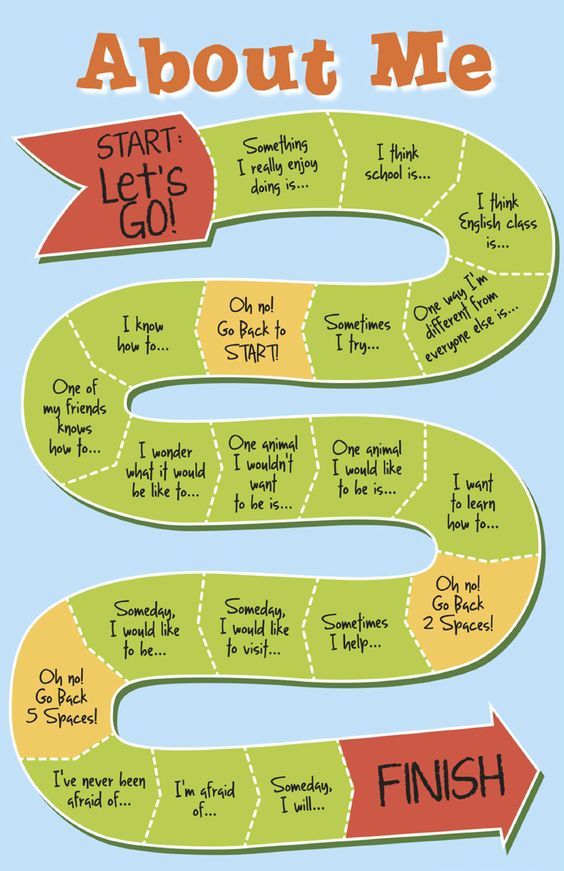
1. Line Up and Jump Activity
Here are a couple of fun activities you can use to practice be-verbs with your students.
- Have students line up in a line facing you.
- You assign actions for each be-verb: 1. Jump right for “is.” Jump right for “are.” Put your hands up and jump for “am.”
- Call out a subject.
- Students respond with the correct action while calling out the correct be-verb.
- After students have gotten the hang of the activity, you can add in a fun consequence for getting it wrong, like 10 jumping jacks.
In this activity, you’ll need 1. Pictures of Animals 2. Flash Cards with adjectives Written or Pictured on Them. 3. Flash Cards with Be-Verbs on Them. If you’re a member of the ESL Curriculum Membership, click here to grab some resources for this activity.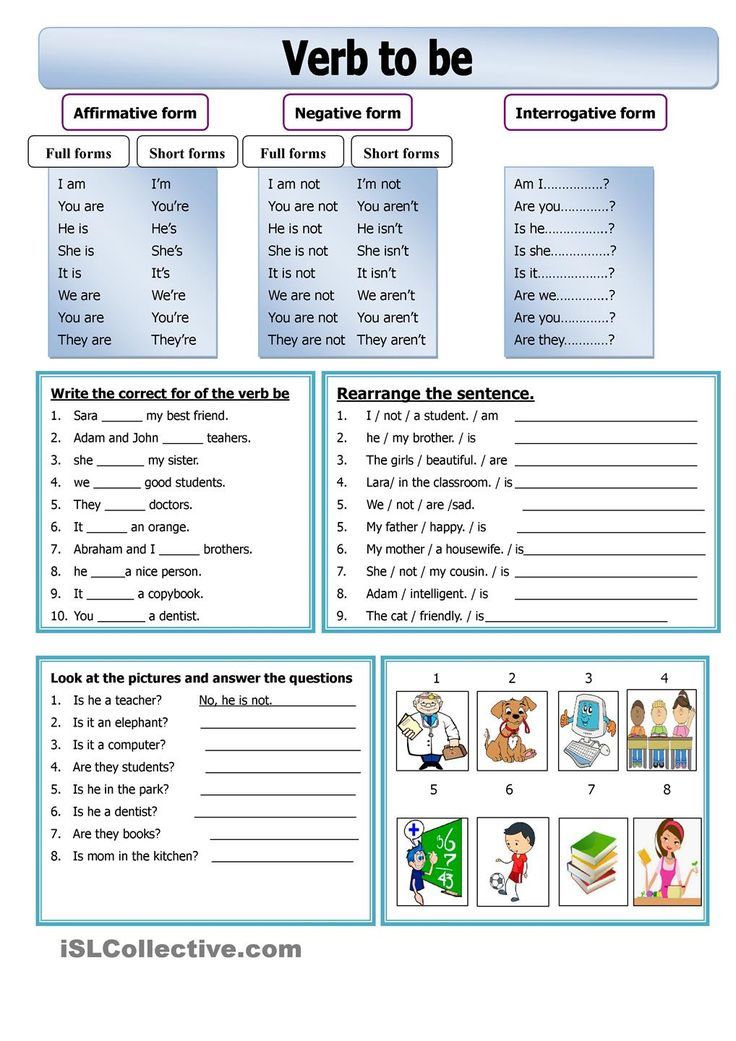
- Students lay out the pictures and flash cards on their desks.
- They organize the pictures and flash cards into sentences describing the animals.
- They share their sentences with each other.
- They draw a picture of an animal and write sentences describing it on a sheet of poster.
Check out the lesson pack below for ESL Worksheets and activities you can use with your students online or in the classroom.
Grammar LessonThere & Be-Verbs WorksheetsEverything you need for an engaging be-verbs lesson with your English learners. Click the button below to grab the lesson now.
Download Worksheet Pack
Need more ESL teaching materials?Sign up for the ESL Curriculum Membership and get access to 100s of engaging and effective lessons filled with speaking practice pages, reading passages, graphic organizers, anchor charts, printable games, flash cards and tons more
Love the be-verbs lesson? Leave me a comment below!
How To Introduce And Practice The Verb "To Be" To Beginners
The verb “To Be” is often the first verb students learn in their English syllabus. This verb allows the students to make simple sentences with the vocabulary they’ve already learned.
This verb allows the students to make simple sentences with the vocabulary they’ve already learned.
Here is a step-by-step lesson plan to introduce and practice the verb “To Be” to beginner English learners.
Warm-Up:1. Review any adjectives or jobs students have already learned. E.g. hot, cold, well, teacher, student, tall, fat, etc.
Introduce the New Vocabulary:2. Introduce any new vocabulary you plan to use in this lesson and students haven’t learned them yet such as happy, sad, etc.
3. Use flashcards to drill the vocabulary and worksheets for further vocabulary practice activities.
Introduce the Verb “To Be”:4. Make sentences such as “I am happy. You are happy. Jenny is happy.”
5. Ensure that students understand how the subject and forms of the verb are paired.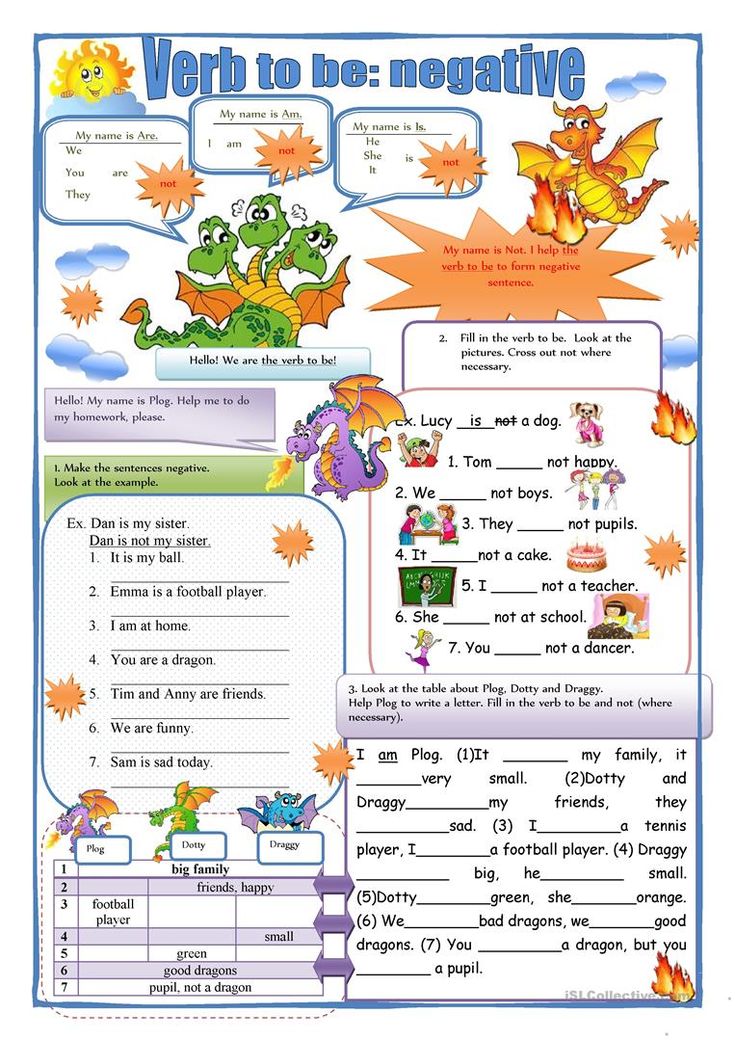
6. Make three columns on the board, the first for the subjects, the second for the verb “to be” and the third for the adjectives.
7. Call on students to make sentences by choosing a subject, verb, and an adjective from the three columns on the board.
8. Ask questions such as “Is he happy?”, “Are you a student? They will understand what you are asking without introducing questions with the verb “To Be”.
9. Elicit the positive answers from the students. Have them answer by saying “Yes, he is happy”, “Yes, I am a student” so that they practice saying the target structure.
Practice the Verb “To Be”:10. Have students match sentences with images or with translations of the sentences to test comprehension.
11. Using worksheets, have students fill in the blanks with “am, is, or are” to complete sentences to ensure that they understand which form of the verb agrees with certain subjects.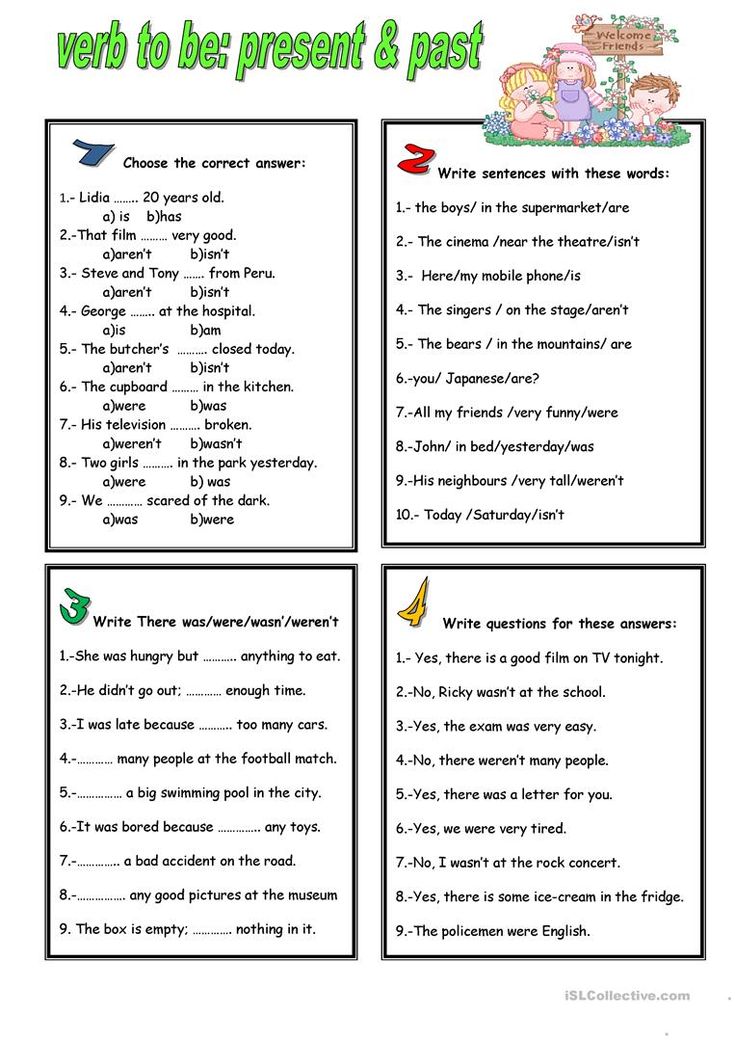
12. Working in pairs with a worksheet, students match a phrase from the first row (E.g. I, He is, She, I am, You, etc.) with the suitable one from the second row (E.g. am happy, sad, are good, is pretty, a student, etc.)
13. Introduce the question that goes along with this target structure saying “Is she pretty? Are you good? Are you a student?“. Elicit only yes-answers for this lesson to have students practice saying the verb “To Be”.
14. Focus on how to form the question.
15. Divide the students into pairs and encourage them to practice asking and answering questions using the target structure.
16. Once the students are quite confident with making sentences using the singular you, I, he and she, you should introduce the plural we, they and you.
Finish the Lesson17. Use a suitable game or song where the students practice the verb “To Be” and enjoy learning as well.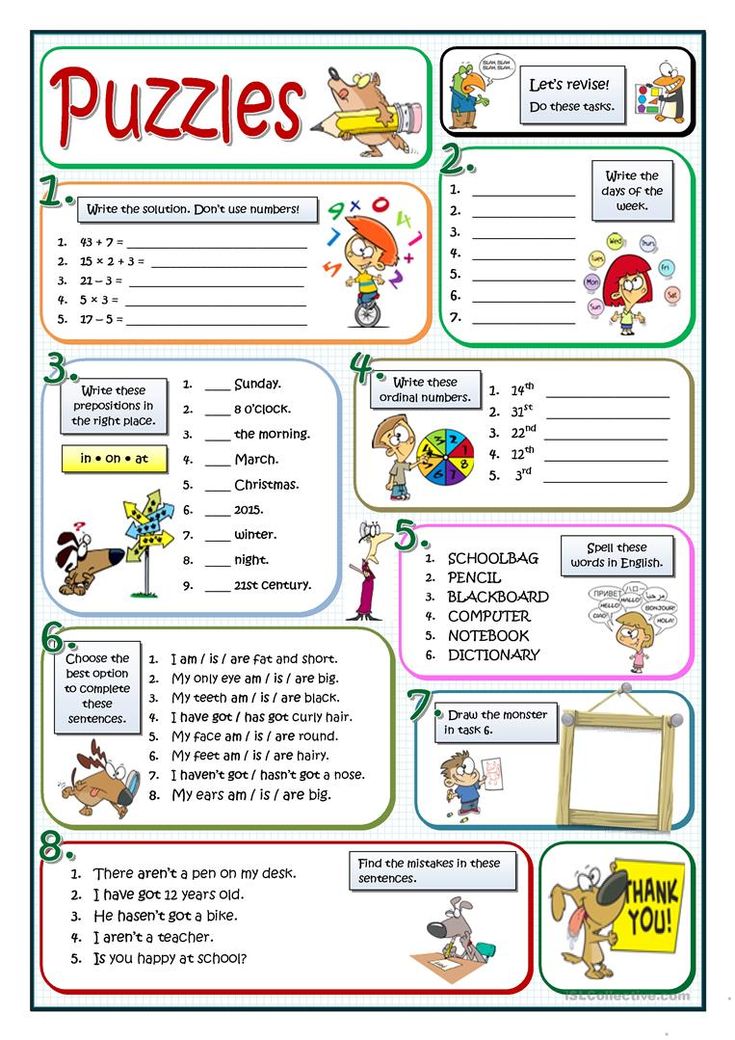
As it is the first verb students study, it is very important to get them to understand that the form of the verb is affected by the subject of the sentence.
Thanks For ReadingLiked This Article?
Share It With Your Networks.
You can also join my email list not only to be notified of the latest updates on elttguide.com but also to get TWO of my products: Quick-Start Guide To Teaching Listening In The Classroom & Quick-Start Guide To Teaching Grammar In The Classroom For FREE!
Want to Continue Your ELT Professional Development?I offer various ELT publications on teaching English as a foreign language.
In these publications, I put the gist of my experience in TEFL for +20 years with various learners and in various environments and cultures.
The techniques and tips in these publications are sure-fire teaching methods that worked for me well and they can work for you, as well, FOR SURE.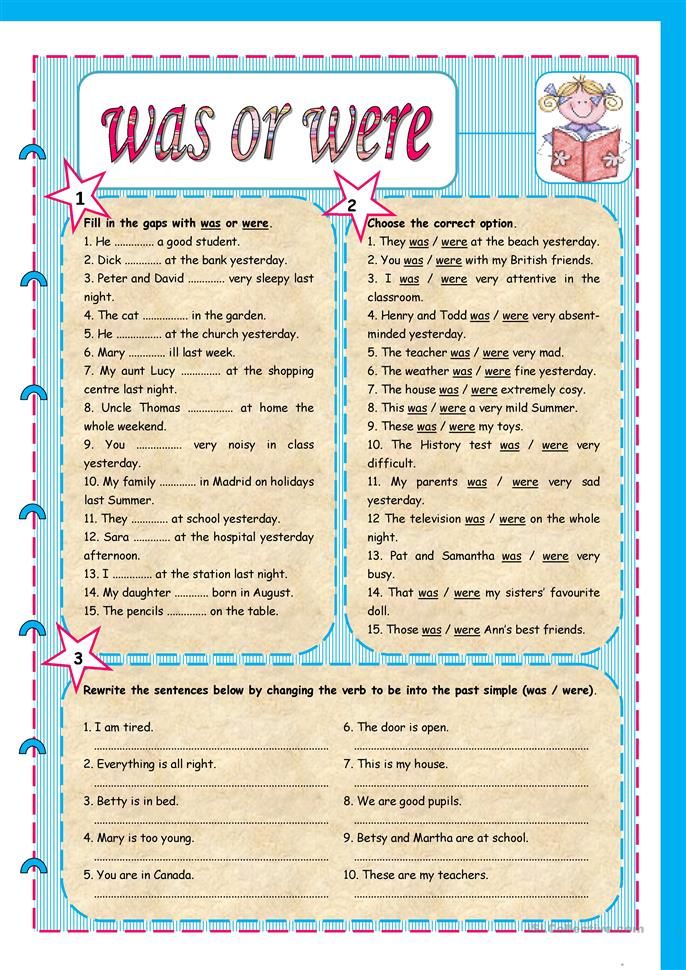
Go ahead and get a look at these publications to know more about each one of them and the problem & challenge each one focuses on to overcome.
Then, you can get what you have an interest in. It is very easy and cheap. You can afford it and you’ll never regret it if you decide to get one of them, FOR SURE.
Now, click to get a look at my PublicationsSearching For The Best TEFL Courses?We Recommend International TEFL Academy (ITA)
It is one of the world’s largest TEFL certification schools for you to become professionally trained as an English teacher.
International TEFL Academy (ITA) trains more than 6,000 English teachers annually and offers internationally accredited TEFL-TESOL certification courses online and in 25 locations around the world.
All students and graduates receive a lifetime job and search guidance, and graduates are currently employed as teachers of English online and in more than 80 nations in Asia, Europe, Latin America, and the Middle East.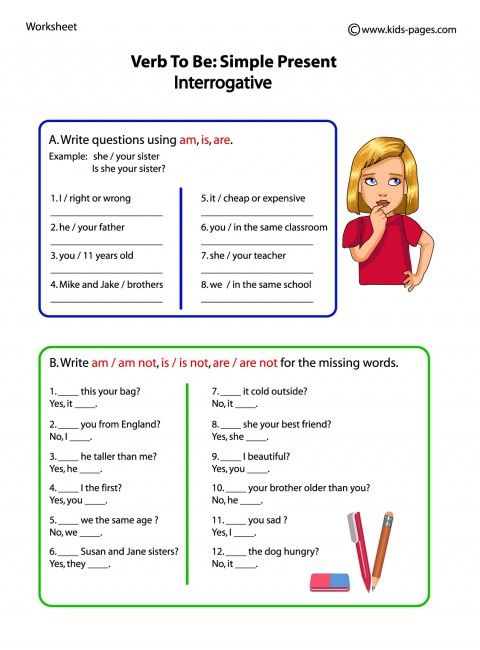
For more information about TEFL certification and teaching English abroad, please visit their site: International TEFL Academy (ITA) to receive a FREE guide now.
P.S. This post was proofread by GrammarlyHow to learn the verb to be for children of any age
If you have a child, start learning English with him now, childhood is a golden time for intuitive language acquisition! Where to begin? Of course, from the verb to be .
Children under the age of eight can easily learn a native language and speak without an accent. Later it is also possible, but with much more effort. You will have to delve into grammar, do exercises and master an unusual way to pronounce sounds. Today we will talk about how to learn English at different ages - starting with the smallest.
We will look at different teaching techniques for toddlers and exercises with the verb to be that you can do with mom or dad.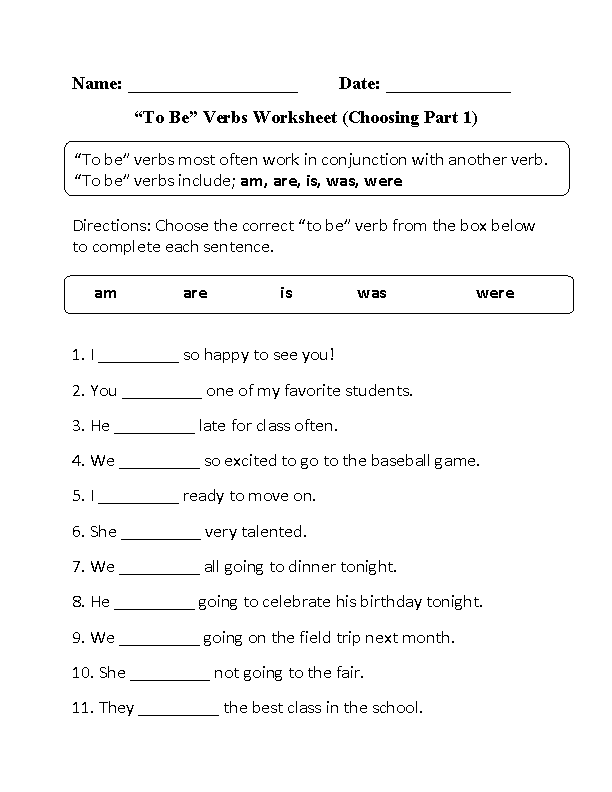
Someone will say: what exercises can be on to be if the child is five years old?
It is not necessary to tell your child that he conjugates the verb to be in Present Simple, exercises are not only what they write in a notebook, sitting without moving. In childhood, especially preschool, it is primarily a game. Children learn about the world through play. So let this world, as if by chance, include the English language!
But first of all, we ourselves need to remember what we want to teach in one way or another.
The verb to be is the word "to be". The difficulty is that in English it is inserted wherever possible, but in Russian it has long been forgotten about since the fifteenth century. Remember when in the film "Ivan Vasilyevich Changes His Profession", the tsar says:
Az I am king!
This is I am and there is our native verb to be .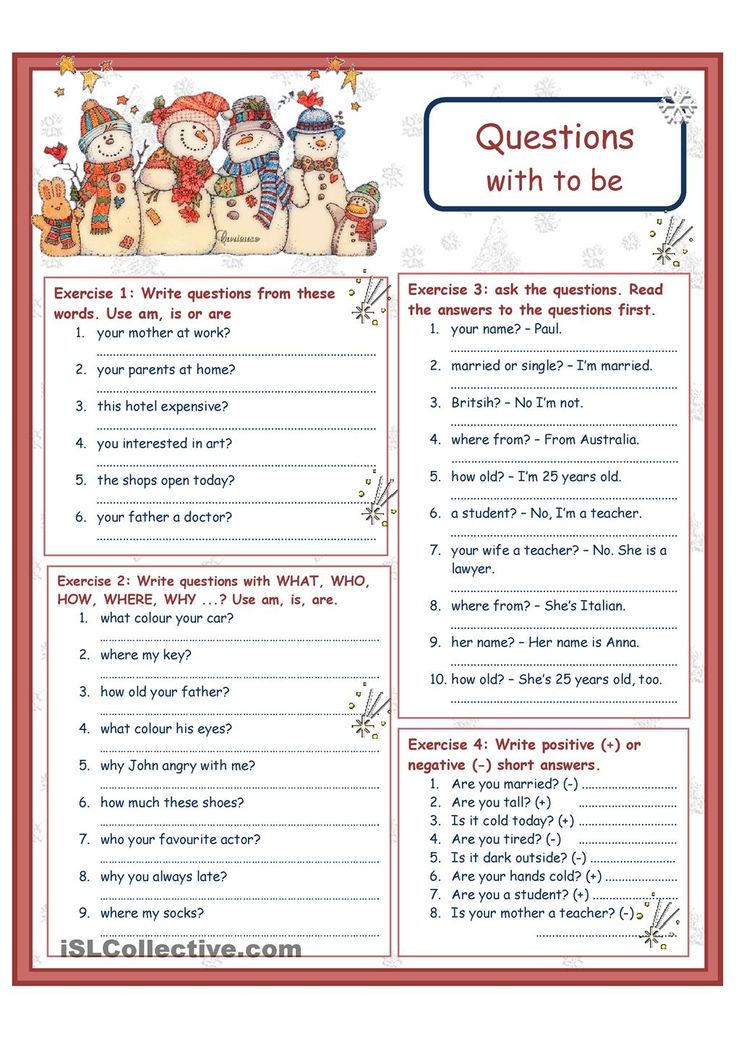 Now instead of kings there are presidents, and instead of there are - at best, a dash:
Now instead of kings there are presidents, and instead of there are - at best, a dash:
I am - president!
Let's move on to English. There, for the queen, and for ordinary people, and in general, for each person there is a form of the verb to be , and it SHOULD NOT be skipped.
Suppose you have to say the following phrase:
My dad - is the best.
One cannot take the obvious path and say:
My father - the best.
Something is missing, and it's a verb to be !
My father is the best.
The problem is that if you don't know in advance, you will never understand that is Words are outwardly dissimilar. This is how the verb to be looks like in different faces:
Short words I, you, she, it and so on are pronouns . They are called so because they occupy the place of nouns. That is, in order not to name a noun that is already known each time, you can put a pronoun in its place.
They are called so because they occupy the place of nouns. That is, in order not to name a noun that is already known each time, you can put a pronoun in its place.
- Words denoting objects in the singular, such as: table, apple, house, computer, can be replaced by it .
If there is more than one item or person, replace them with they :
3 apples, 10 houses, a sister and a brother = they
Animals: beloved pet and almost family member, we call he or she .
If the animal is not domestic or its gender is unknown, we use the neuter pronoun - it .
All this information is needed in order to correctly combine pronouns and to be , according to gender and number.
For example, you want to say "the book is boring."
the book - the book
Boring - boring
Just say :
The book boring
- will not work.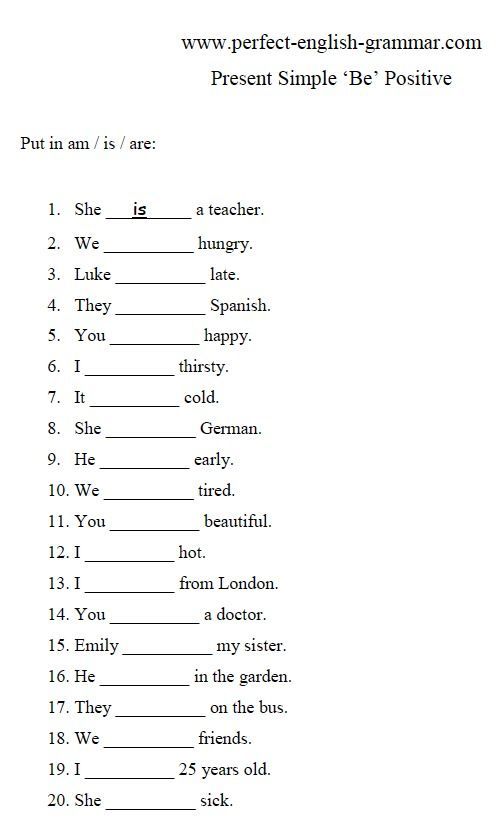
We need to ask ourselves a couple of questions. 1) Is the book in the singular? Yes, we are talking about the same book. 2) Is the book an object? - Yes.
In this case, instead of the word book , we substitute it - a pronoun for inanimate objects in the singular. And with the pronoun it is is .
It is interesting
The book is interesting
Or, say, a sentence in Russian sounds like
"Mom and dad are happy."
Mom and dad are two people, so the third person pronoun is needed in the plural - they . We look at the table: this pronoun corresponds to are .
They are happy.
Mother and father
Now that you are confident in your theoretical base (the tablet can be printed or rewritten to refer to it in case of uncertainty), you can start educating your children.
Verb to be : exercises for young children
If adults can already gather themselves together and memorize the table when life forces, then children are completely useless.
Of course, you need to create strong associations in order to understand that am, are, is refer to one word - be , that they are all in the same bundle.
But in no case should a child be forced to sit and mumble the forms of the verb, while expecting them to be remembered. Dull repetition, even for adults, does not help much.
Need to link information to something beautiful, fun, exciting. What does your child like to do the most? Does he like to run, jump, or can he not be torn away from paints and pencils? Is he humming tunes he's heard recently? Depending on his preferences, we will choose the most suitable way for him to perceive information, activate the type of memory that works great from nature.
Movement — is life
Linking speech and movement, we activate motor memory. If you sit passively at the table, only the desire to sleep is activated, isn't it?
So, here are the first fun exercises on to be for preschool and primary school children:
- Steps
Find any safe ladder. Write on the steps with chalk forms of the verb to be .
Jump from one step to another, shouting loudly:
I am!
You are!
He is!
She is!
It is!
We are!
They are!
- Rope
Jump rope, on each jump do the same as in the previous exercise.
- Ball
The parent or someone else throws the ball while saying the pronoun, the child catches and says the appropriate form to be .
In principle, the movement can be anything - you can clap your hands, squat, lightly jump up and stomp your feet.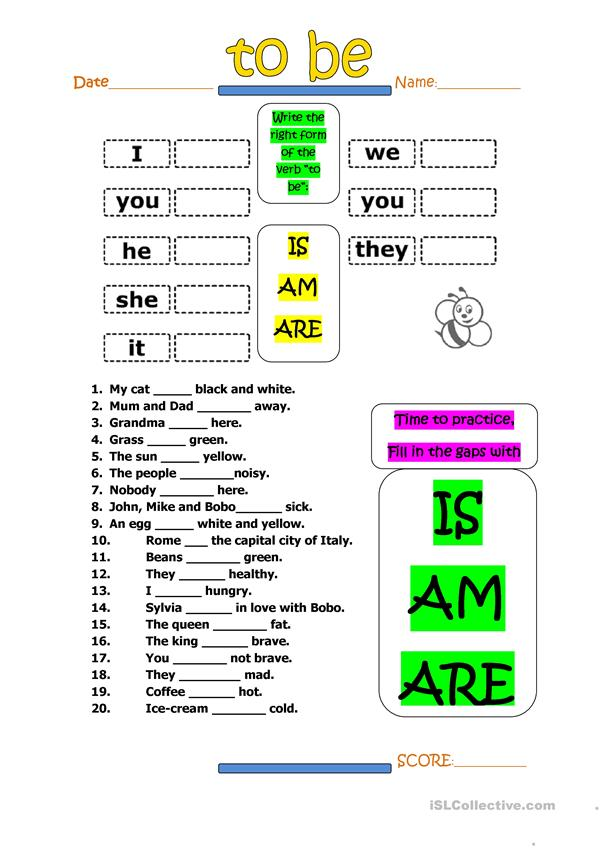 There is only one condition here - the action must be repetitive (otherwise it will be too difficult to coordinate movements and speech), not be too complicated and energy-consuming.
There is only one condition here - the action must be repetitive (otherwise it will be too difficult to coordinate movements and speech), not be too complicated and energy-consuming.
Little artists
If a child likes to draw...
- Draw everything that lies badly with verbs to be for different persons. Gouache, ink, felt-tip pens, crayons, pencils, and fingers dipped in paint.
- Sculpt small (or even large) is, are, am from plasticine and clay, bake pancakes in the form of these words.
Why do this? So the child creates visual images of letters and words. If he is a visual, this will later help in memorizing new vocabulary, and generally improve memory.
If the letters are crooked, incomprehensible and "wrong" in any sense of the word... Rejoice! There is a process of knowledge. There is no need to evaluate the result and adjust the classes to some standards. The main condition is that they should bring joy.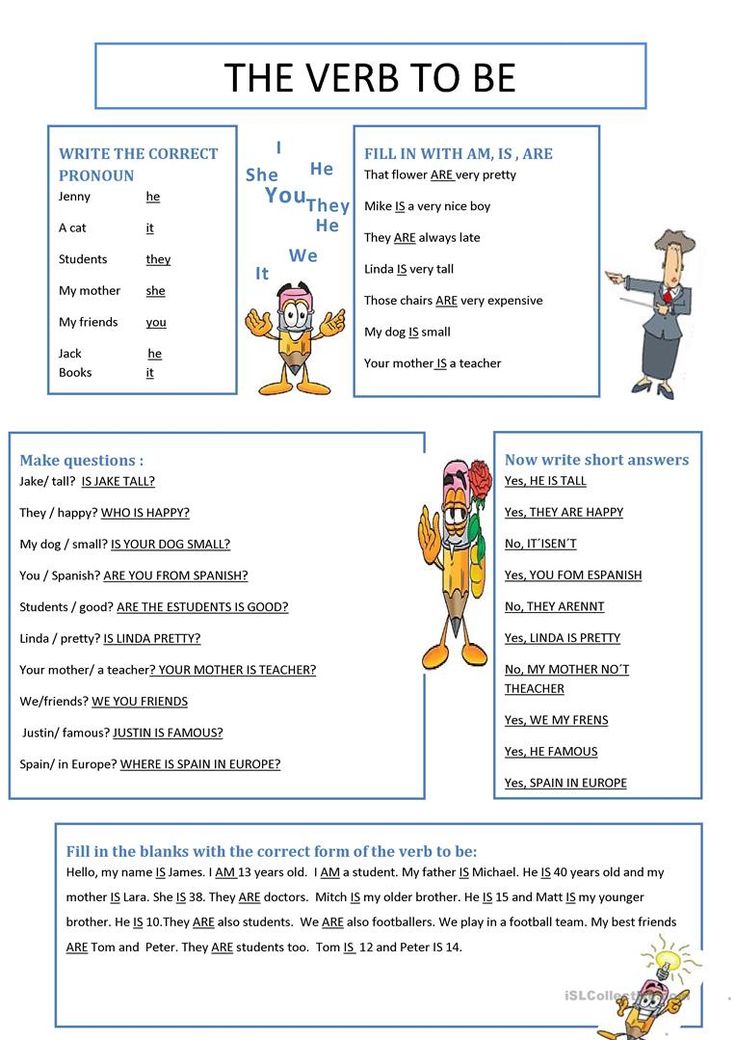
Future musicians
- If a child likes to sing, you can come up with a simple melody, or use an existing one, and sing all forms of the verb in a row. Any melody will do - if the child is musical, “There was a birch in the field” and “The little Christmas tree is cold in winter” will do.
- If you don’t feel like inventing it yourself, you can always turn on Youtube and find there specially invented songs for such purposes on the request “verb to be for kids songs” or “verb to be for children”.
You can play this game from time to time: point to different objects and people and name the pronoun ( he, she, they , etc.) and the verb to be for this pronoun.
For example, if you see computer , you need to say: It is;
A man and a woman are walking down the street - They are;
Rain outside the window — It is;
Dad on the sofa - He is;
Mom and I in the window reflection — We are;
My reflection — I am.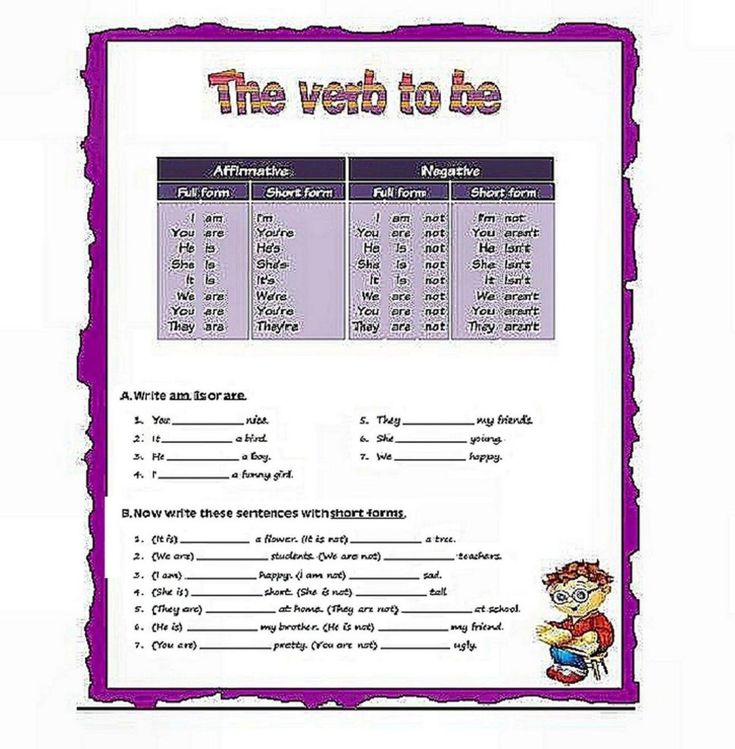
To be : exercises for children of school age
Sometimes parents sound the alarm: it seems that they studied English from early childhood, but went to school and forgot everything. In fact, the knowledge remains, but the skill of transferring knowledge to another context is not yet available. And the form of classes is now completely different - you need to sit for a long time, write something down, listen to something incomprehensible ...
The priority of play activity gradually disappears with age, but this does not mean that classes should become dry and purely theoretical. It is still useful to include tactile sensations, to paint everything in different colors. Singing sounds in a certain rhythm also helps a lot. These ways of tapping into your inner resources will work well all your life.
Cutting out cards with words is quite an exciting activity, it perfectly trains memory and develops logical thinking.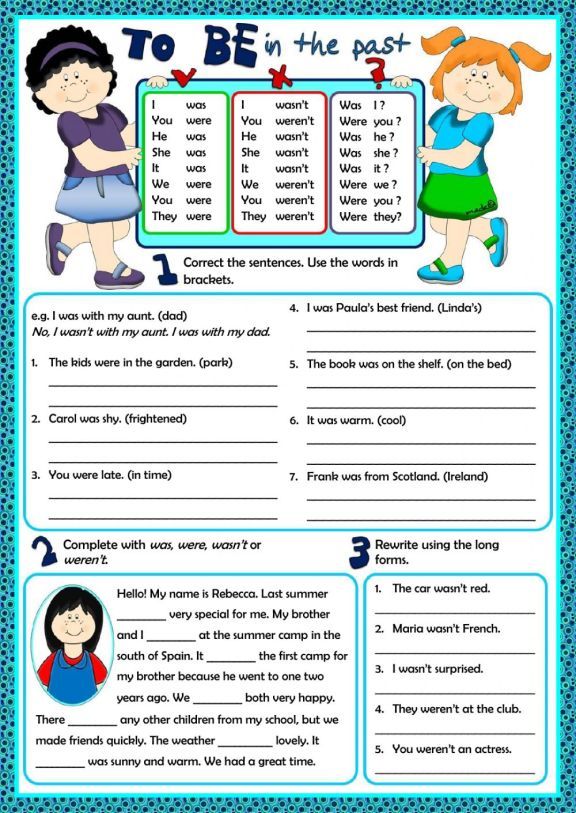
- We make beautiful cards. We write verbs on three of them:
am
are
is
On the rest - pronouns:
she
he
it
I
we
they
you
Now you need to arrange them so that
I matched am ,
you, they, we matched are,
he, she, it were opposite is.
Then we choose the colors, and paint each pair in its own color. For example, cards I and am green, you and are red and so on. Subsequently, these colors will help to quickly distribute the verbs into pronouns, this will consolidate the newly formed neural connections.
After a while, you can add nouns instead of pronouns, and you will already have other pairs:
Mother is (mother is)
Masha is (Masha is)
Brother and sister are (brother and sister are)
And the third step is adding cards with adjectives: happy, beautiful, funny, lucky, tired , cool and so on.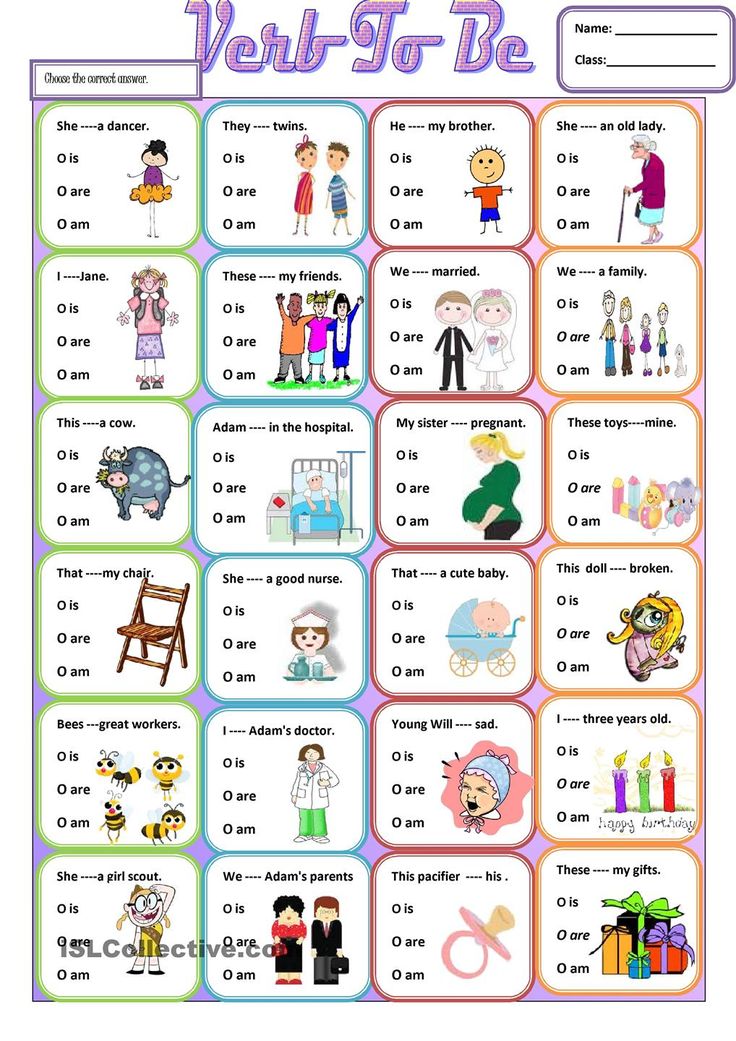
You will get full-fledged offers:
Mother is happy
Masha is beautiful
Brother and sister are tired
Abbreviated forms
In most cases, it is not the full form “pronoun + verb to be” that is written and spoken, but an abbreviated one. You need to shorten the verb. The first letter "bites off" from it:
I am
you are (remove a from are ) = you're, and so on:
She is = she’s
He is = he’s
It is = it’s
We are = we’re
They are = they’re
Practice
Rewrite the following phrases so that they are shortened:
- We are little girls
- It is a computer (This is - computer)
- You are beautiful
- I am so happy
Negations
The book is not boring
The book is not boring
I am not happy
Most often, the particle not occurs in an abbreviated form - the median vowel is thrown out of it - o.
Practical task
Change the sentences so that they are negations:
1. You are a student — You aren’t a student 9
3. He is my father
4. She is happy
5. I am tired
Interrogative sentences
It is a cat
The question turned out (Is this a cat?), you need to place to be at the very beginning of the sentence:
Is it a cat?
Practice
Make questions out of these affirmative sentences.
1. They are students - Are they students?
2. She is my sister
3. He is a doctor
4. It is an apple0003 7. I am tired
The simple past time of the verb To BE
There are only two versions of the verb To BE , this is WAS and .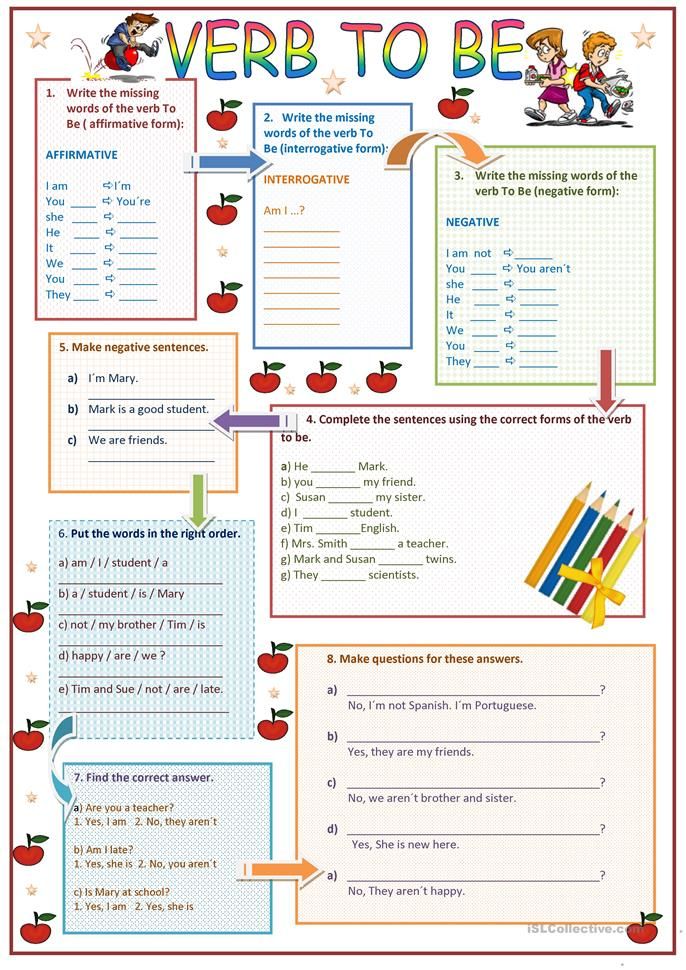 Was for the singular, were for the plural. In Russian we use the verb to be in the past tense. Accordingly, where in Russian we would say “was”, “was”, “was”, or “were”, in English there will be words was or were .
Was for the singular, were for the plural. In Russian we use the verb to be in the past tense. Accordingly, where in Russian we would say “was”, “was”, “was”, or “were”, in English there will be words was or were .
I was a boy
I was a boy
Apple was green
The apple was green.
Was/were: exercises for children who already know the past simple tense:
- Choose the correct translation:
1) She was happy
- She were happy
- She was happy
- She wasn't happy
2) They were tired
- They were tired
- They were tired
- They are tired
3) He was a doctor
- He was a doctor
- He's a doctor
- He was a doctor
- Change the sentences to make the past tense
1.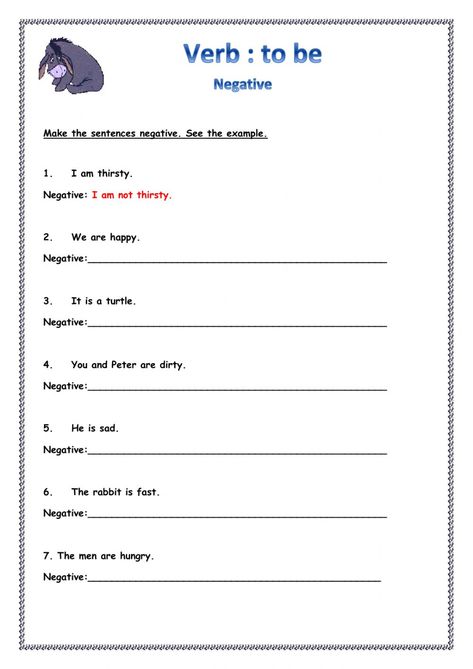 I am a teacher
I am a teacher
2. They are beautiful
3. We are sad
And now, a crossword puzzle!
Our favorite verb to bi, the exercises with which we did today, will need to be inserted in place of the gaps in the sentences, and then fill in the crossword puzzle.
Horizontal:
- I __ not a teacher. (I am not a teacher).
- You____ at school yesterday. (You were at school yesterday).
- It__ a good idea. (This is a good idea).
Vertical:
- You ___ a good girl. (You are a good girl).
- She ___ at home yesterday. (She was at home yesterday).
Crossword answer:
Horizontal:
- am
- were
- is
Vertical:
- are
- was
Mastered to be ? Excellent! This is the cornerstone of English.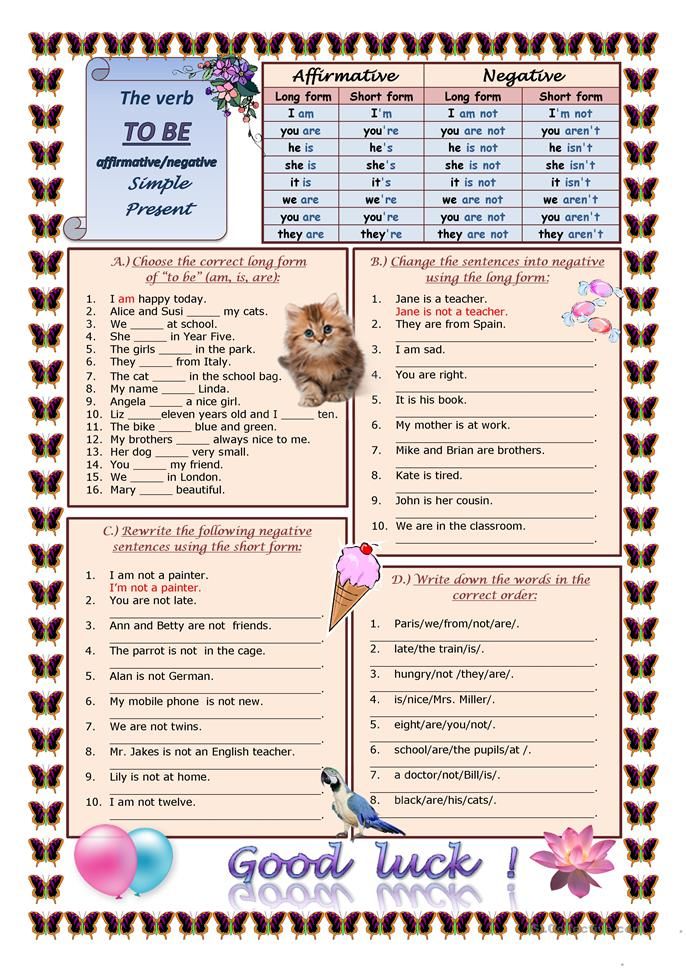 With it, you can make a huge number of different sentences - both affirmative, and interrogative, and negative. Move on, read our materials and learn new things!
With it, you can make a huge number of different sentences - both affirmative, and interrogative, and negative. Move on, read our materials and learn new things!
Verb TO BE for beginners.
What is the difficulty? Why is the theme so simple, but so many mistakes? Because, starting to learn English, not everyone restructures their thinking, but continues to think in Russian. The verb 'to be' is present in Russian, but ... we miss it when we build a sentence in the present tense. In the past, the verb 'to be' had many forms in the present tense: are, are, are, are, are , and so on. But in modern Russian only 'is' is preserved: I am, he is, we are and so on. But no one says that, 'is' remains "in the mind"! Therefore, it seems very strange to us that this very "is" should be inserted in English.
Content:
- How to translate the verb to be
- Interrogative and negative and form to be
- Short form to be
In English, the verb to be has three present tenses: am, is, are .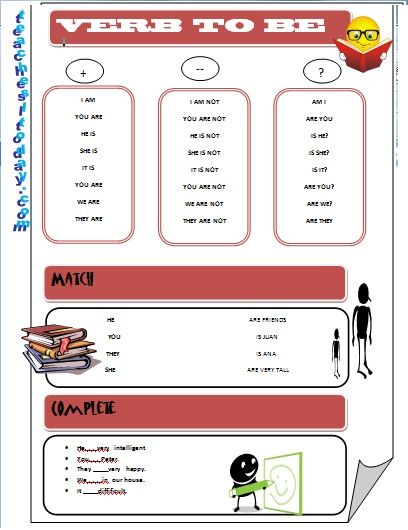
If you are talking about yourself ( I ), then use the verb am :
I am a teacher. - I (am) a teacher.
I am happy. - I (are) happy.
If you are talking about he (he), she (she), or it (it), use the form is :
He is a doctor. - He (is) a doctor.
She is beautiful. - She (is) beautiful.
It is my dog. – This (is) my dog
If you are talking about we (we), you (you), they (they), then use the form are :
We are friends. We (are) friends.
You are hungry. - You (are) hungry.
They are my parents. – They (are) my parents. Agree that the word 'is' looks rather strange in our example sentences, but if you want to speak English, you will have to think in this way, especially in the initial stages of learning.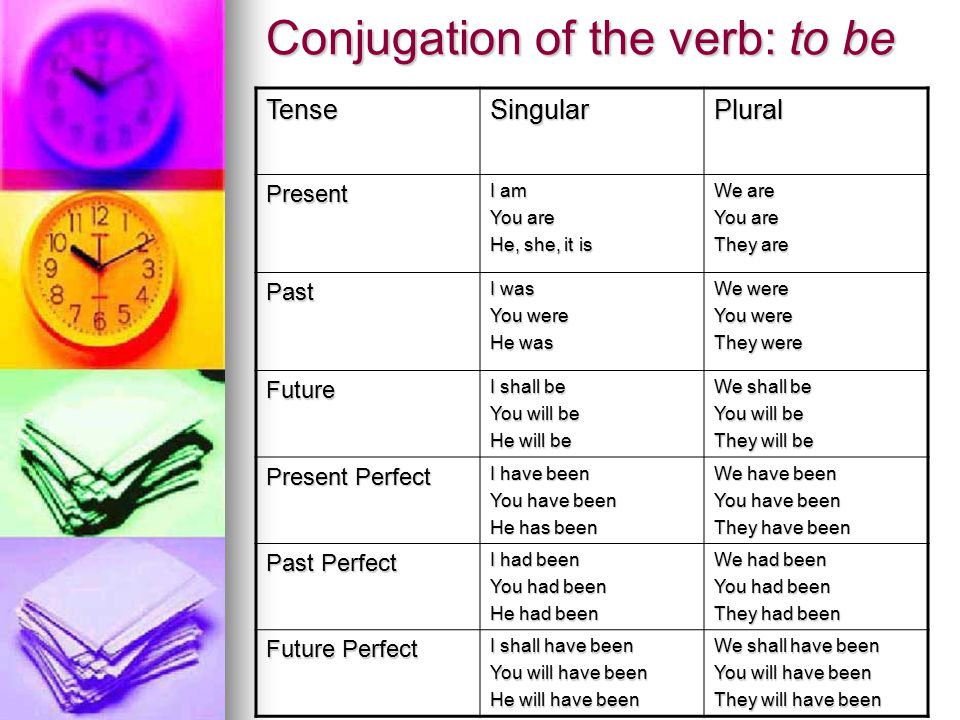 To be can be translated with verbs 'to be', 'to be', 'to exist' although this gives the statement some formal coloring, a dash can also be used.
To be can be translated with verbs 'to be', 'to be', 'to exist' although this gives the statement some formal coloring, a dash can also be used.
Another observation from practice that needs to be paid attention to. Sometimes they forget about the three forms and say this: I be a teacher . It's something like: I'm a teacher . Of course, you should get rid of such a mistake if you notice it in your speech.
To use the verb to be correctly, you need to remember the main cases of its use. Since to be acts primarily as a linking verb, its main function is to link parts of a sentence.
1. The verb to be connects a noun (pronoun) and an adjective.
Since to be is indispensable in descriptions, characterizing or describing something with adjectives, do not forget to link words with a linking verb:
I am fine. – I (are) fine.
My son (he) is happy. - My son (is) happy.
The children (they) are healthy.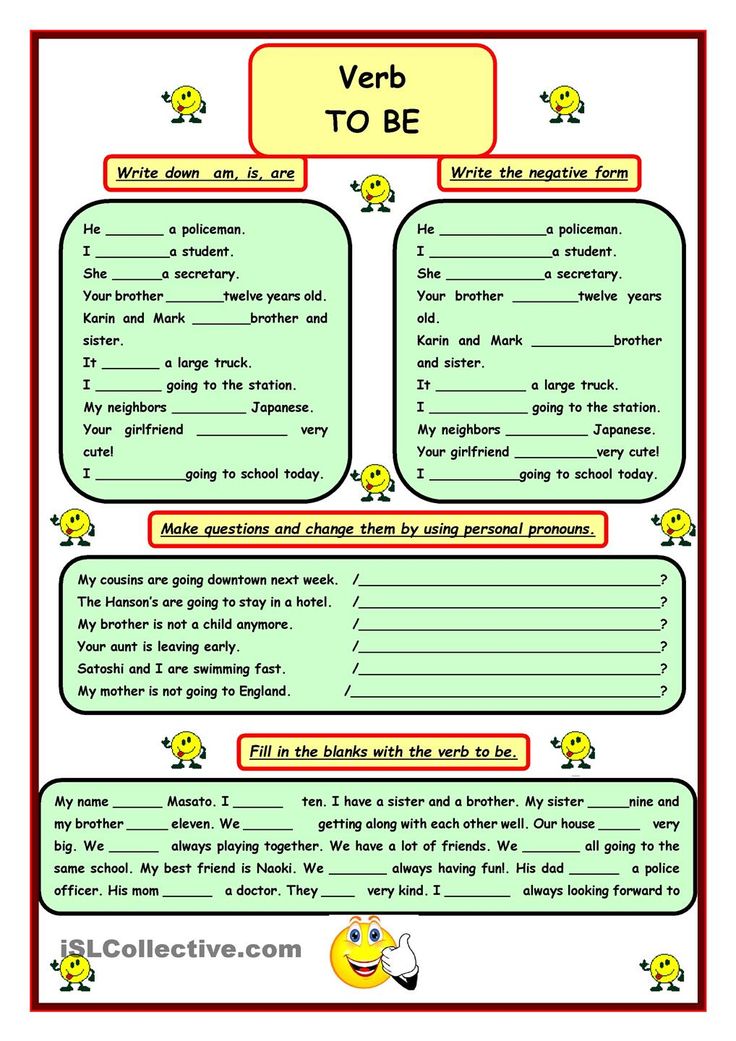 - Children (are) healthy.
- Children (are) healthy.
This book (it) is interesting. - It's an interesting book.
Please note that if the subject in the sentence is a noun, then in order to choose the correct form of the verb to be, you should replace the noun with the appropriate pronoun: son – he; children – they; book - it.
2. The verb to be is used when they want to say who or what the subject of discussion is.
In other words, answering questions like: Who is this? What is it?, use to be in your answer. Also to be required if you introduce yourself or represent someone:
I am your teacher. - I'm your teacher.
She is my sister Mary. This is my sister Mary.
They are my colleagues. “They are my colleagues.
3. The verb to be is used when talking about professions.
Mary is a writer.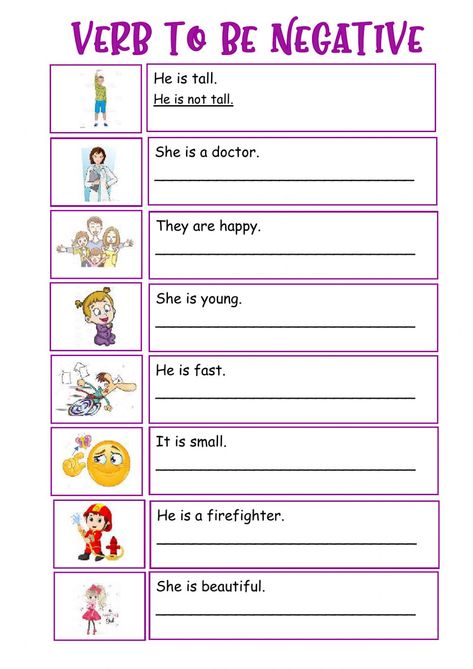 Mary is a writer.
Mary is a writer.
John is a businessman. John is a businessman.
My friends are engineers. My friends are engineers.
If you are talking about someone's profession, then the verb to be can be translated as 'to be' , but this translation is not always appropriate.
4. To be is used when talking about nationalities.
No wonder many English textbooks begin with the study of the names of countries and nationalities, so it is very convenient to practice the use of the verb to be:
I am American. - I am American.
Anna is Russian. - Anna is Russian.
Max is Canadian. Max is Canadian.
My partners are Chinese. – My partners are Chinese.
Detailed information about nationalities in English can be found here.
5. To be is used when talking about age.
A common mistake is to use the verb have in this case. Although some languages use have when talking about age, in English always use to be in the correct form:
I am thirty (years old). - I'm thirty years old.
- I'm thirty years old.
My sister is twenty-five (years old). My sister is twenty five years old.
The students are eighteen (years old). “Students are eighteen years old.
6. The verb to be should be used when you are talking about the location of something.
Verbs 'to be', 'situate' can be used if the content of the sentence allows:
I am in the kitchen. - I am in the kitchen.
We are at home. - We're home.
Her bag is on the table. – Her bag is on the table.
The cat is in the box. - A cat in a box.
London is in Great Britain. London is located in the UK.
7. To be (or rather its forms is and are) is an important part of the there is/there are turnover.
We will not talk about this turnover here, because we have already published detailed material on this topic. You can read more about the there is/there are turnover here, but first we recommend that you read this article to avoid confusion.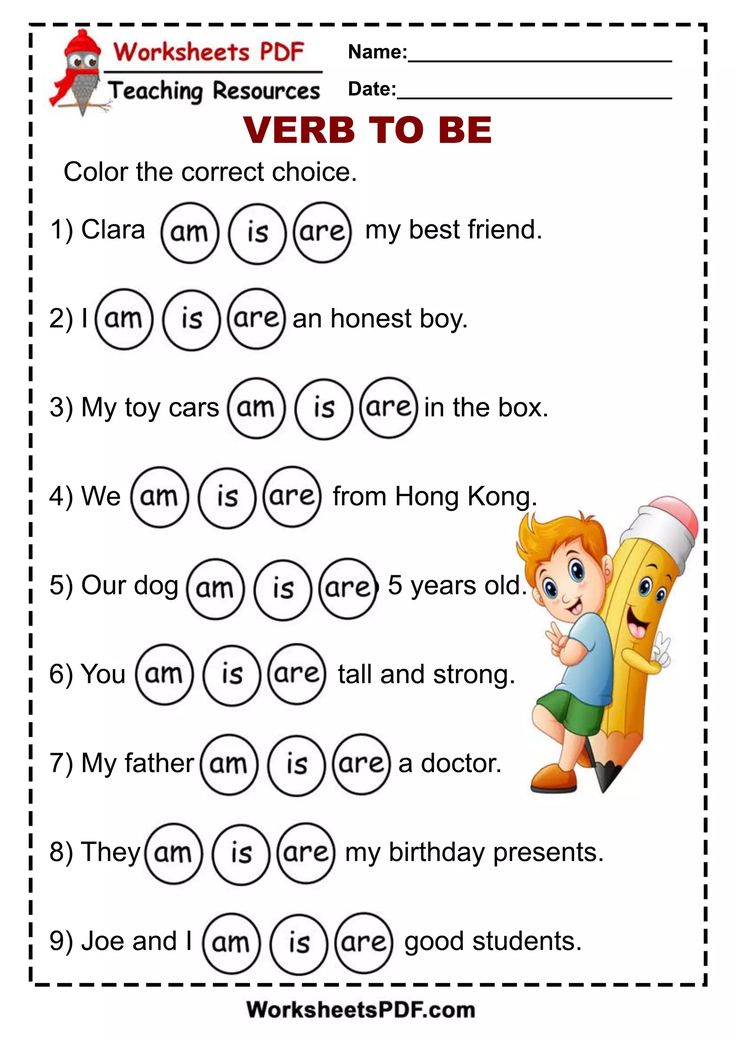
8. To be can also be used as an auxiliary verb.
In the tenses of the Continuous group, for example, to be, combined with the verb with the ending - ing , forms various tense forms.
If we again draw parallels between Russian and English, we will see that in Russian the verb to be does not carry a grammatical load, which is why we omit it so freely and without prejudice to the meaning of the sentence. If you need to ask a question, use intonation. If we want to say negation, we add the particle 'not' and that's it! In an English sentence, the verb to be is a strategically important component, because it is it that determines the type of utterance and it is to it that particle 9 is added.0095 not .
To form a negative sentence, all you need to do is put the particle not after the verb to be in one form or another:
I am not your teacher. - I'm not your teacher.
My sister is not twenty-five.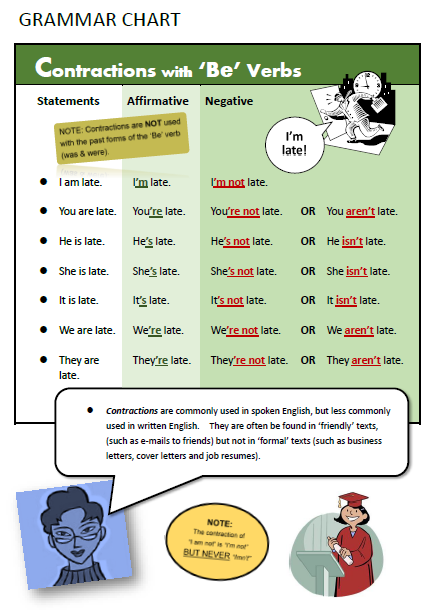 “My sister is not twenty-five.
“My sister is not twenty-five.
He is not at home. - He is not at home.
We are not related. - We are not relatives.
You are not busy. - Are you busy.
They are not my colleagues. They are not my colleagues.
Theoretically, each of the previous examples can be turned into a negation by adding the particle not .
If you want to ask a question, then the verb to be must be placed at the beginning of the sentence, before the subject:
Am I right? - I'm right?
Is she your sister? - Is she your sister?
Is he busy? - He is busy?
Is it my book? - It is my book?
Are we ready? - We are ready?
Are you American? - Are you American?
Are they in the room? Are they in the room?
As you can see, these questions imply answers ' Yes' or ' No' . To answer, we also need the verb to be. The short answer should be in two parts.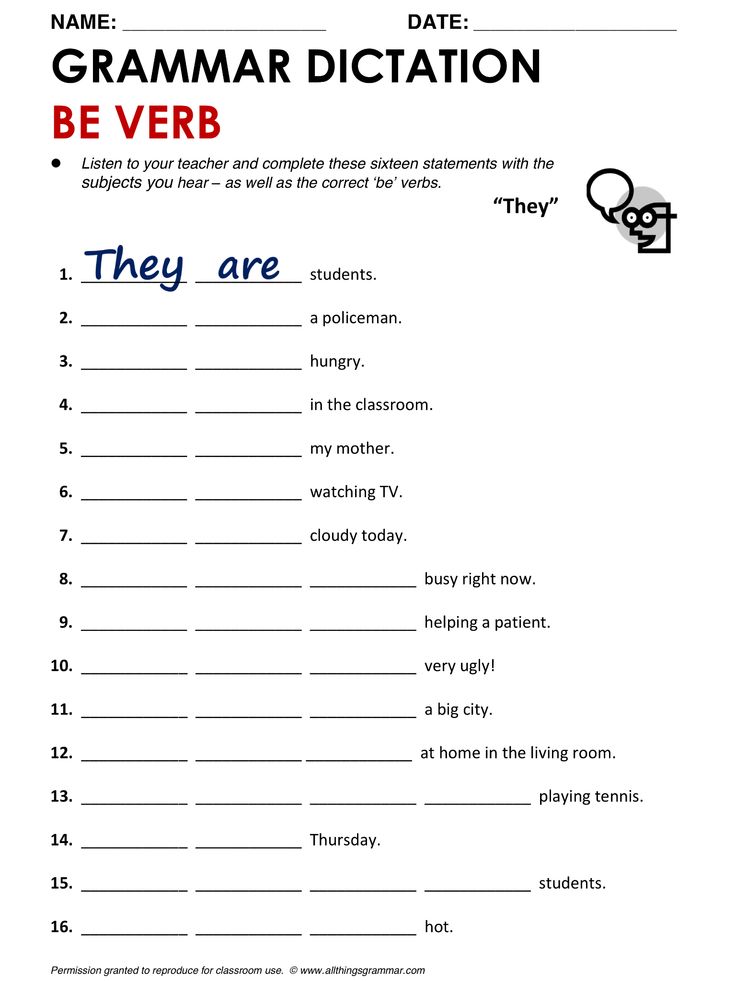 The form of the verb to be in the answer is determined depending on the subject. Please note that when the answer is 'No', then the second part of the answer must contain a negative particle not:
The form of the verb to be in the answer is determined depending on the subject. Please note that when the answer is 'No', then the second part of the answer must contain a negative particle not:
Few people talk to themselves and ask themselves questions, so questions to I and we are rarely asked. But, nevertheless, they occur in certain contexts. For example, when you want to clarify something, ask again, you can ask a question with I or we . Just in case, we offer you options for short answers:
All short answers are translated either 'Yes' or 'No' , the second part remains untranslated. However, when answering in English, you should not miss the second part.
Since the verb to be is used to link words in a sentence, it is often unstressed in the flow of speech, therefore it is shortened and not pronounced in full. Therefore, is distinguished by the full form of the verb to be and by the abbreviated .